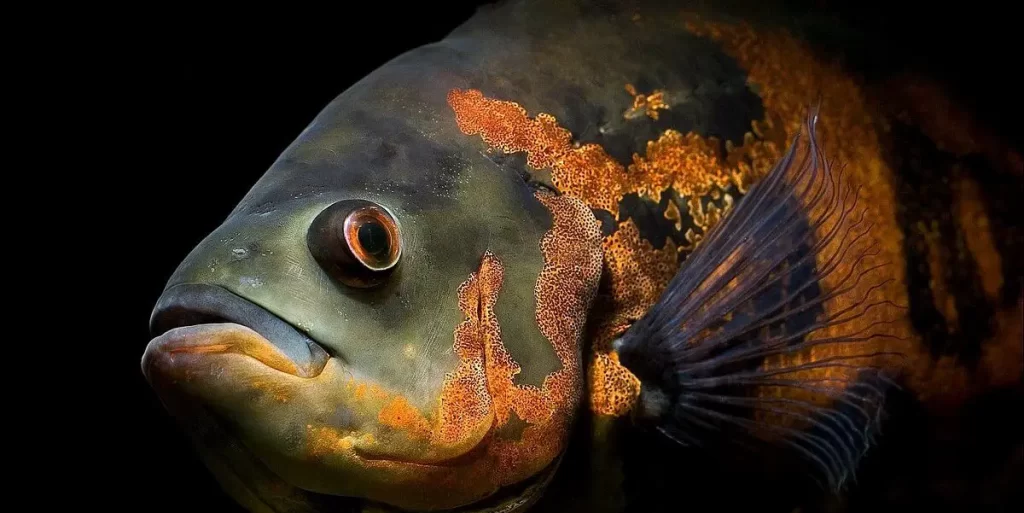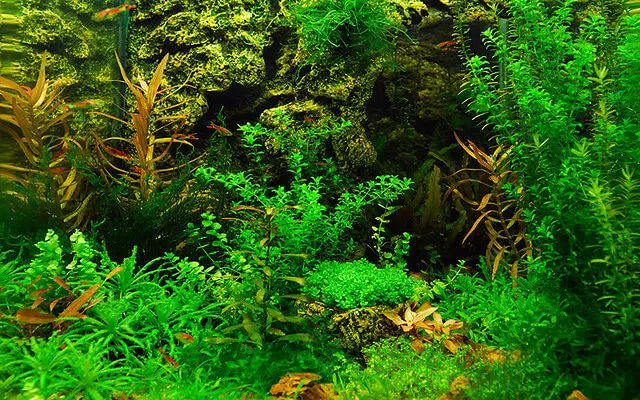As an aquarium owner, maintaining your aquarium during the summer is crucial to ensure the well-being of your fish. The rising temperatures of the season can affect your fish, and various factors like your tank type, fish quantity, room temperature, water quality, and access to air conditioning play a role. Unfortunately, many aquarists underestimate the importance of summer care, leading to fish losses without a clear understanding. Learn how to maintain your aquarium during summer for a happy and healthy aquatic environment.
Quick Answer:
To maintain an aquarium in summer and prevent overheating, consider the following tips: Use a cooling fan, adjust your lighting schedule, maintain proper water levels, employ a chiller if necessary, and keep the room temperature moderate.
Today, we’ll focus on the summer season and how to maintain your aquarium. So, stick with us till the end of the article and you’ll have all the information required for maintaining your fish tank in summer.
Why Do Aquarium Fish Die In Summer?
During the summer, aquarium fish are prone to dying, and one of the reasons behind this is the temperature rise. As the weather gets hotter, the water in the aquarium also warms up. This rise in temperature triggers a boost in the fish’s metabolism. You might think that’s a good thing, but it poses a challenge. Let me explain.
With the increased metabolism, fish require more oxygen to convert their food into energy. However, warm water doesn’t hold oxygen like cooler water. As a result, there’s a reduced amount of dissolved oxygen in the aquarium during the summer. This oxygen shortage can lead to suffocation, causing your fish to meet their demise tragically.
When the metabolism speeds up, the food they consume breaks down more rapidly, leaving them feeling hungry for longer periods. So naturally, you might be tempted to feed them more frequently to keep their hunger at bay.
But here’s the catch: overfeeding can create a new problem. The more they eat, the more waste they produce. If this waste isn’t promptly cleaned from the aquarium daily, it can create a toxic environment, ultimately endangering the lives of your fish.
So, during the summer, it’s crucial to be mindful of the warm water’s reduced oxygen capacity and the potential consequences of overfeeding. Ensuring sufficient oxygen levels and maintaining a clean aquarium actively helps to protect your fish from these challenges related to the summer season.
Why Is Water Temperature Important In An Aquarium?
Fish are cold-blooded creatures, so they cannot control their body temperature like warm-blooded animals. Instead, their body temperature depends on the temperature of the water around them. That’s why keeping the water in an aquarium at the right temperature is important for the fish to stay healthy and happy. Maintaining the right temperature creates a habitat similar to their natural environment, ensuring their health and allowing them to exhibit their natural behaviors.
Fish and other organisms have specific temperature needs for their metabolic functions. If the water is too cold, their metabolism slows down, reducing activity and compromising bodily functions. On the other hand, excessively high temperatures can speed up their metabolism, causing stress and potential health issues.
The water temperature also influences the dissolved oxygen levels. Warmer water holds less oxygen, while colder water can hold more. Therefore, maintaining the proper temperature to provide an adequate oxygen supply, prevent suffocation, and promote overall well-being is essential.
Furthermore, water temperature affects growth and reproduction, impacting their metabolic rate, hormone production, and overall physiological processes. Different fish species have specific temperature requirements for proper development and successful breeding. Deviations from their ideal temperature range can negatively impact their health, leading to illness and death.
What is the Ideal Temperature Range For An Aquarium?
The ideal temperature range for an aquarium varies depending on your fish species. Therefore, knowing your fish’s preferred temperature and maintaining consistency within that range is crucial. Slight temperature fluctuations are generally acceptable, but drastic changes can harm your fish’s well-being.
Tropical fish, for instance, thrive in water temperatures ranging from 70 to 78 degrees Fahrenheit. On the other hand, coldwater fish like goldfish and koi prefer cooler temperatures and can be comfortable in water as low as 60 degrees Fahrenheit.
During the summer season, temperature management becomes challenging. It’s important to exercise caution when using a heater in your fish tank, as it can raise the water temperature excessively.
Generally, most aquarium fish can tolerate a maximum temperature of 80 degrees Fahrenheit. While some species can withstand higher temperatures for short durations, exercising caution and prioritizing their well-being is always advisable.
What Are The Impacts of Summer Temperature On Aquariums?
The summer temperature can get hot, and this heat can affect your aquarium too. So, warmer temperatures can make the water in the tank get hotter, which can greatly impact your fish and other aquatic pets. Here are some of the impacts of summer temperatures on the aquarium:
1. Temperature Fluctuation
During the summer, hot days can be quite common, and just as we feel hot and sweaty, our fish friends experience the same. As the air temperature rises, it directly impacts the water temperature in your aquarium, leading to fluctuations. These sudden shifts in temperature can create stress for your aquatic pets, potentially making them ill or, in the worst cases, resulting in their demise.
2. Increases Evaporation
As the weather gets hotter in the summer, you may observe increased water evaporation from your aquarium. This can pose a problem as it alters the water’s salinity, harming your fish and other aquatic pets. In addition, excessive evaporation leads to a higher concentration of salt in the remaining water, potentially causing various health issues for your aquarium inhabitants.
3. Changes In Lighting
With the arrival of summer, brighter and longer hours of sunlight bring about changes in the lighting conditions that affect your aquarium. These variations in lighting can affect both your aquatic plants and the inhabitants of your aquarium.
Excessive light can lead to algae growth, creating an unattractive and potentially hazardous environment for your fish. Conversely, insufficient light can hinder your plants’ growth and disturb your aquarium’s overall ecosystem.
4. Decrease In Oxygen Level
As the temperature increases, the solubility of oxygen in water decreases. This means warmer water has a reduced capacity to hold oxygen compared to cooler water. The decrease in oxygen solubility is mainly because warm water molecules are more energetic and move faster.
This increased molecular motion hinders the bonding between oxygen and water molecules, making it more difficult for oxygen to dissolve into the water. Since fish rely on dissolved oxygen in the water to breathe, a decrease in oxygen levels can harm their health.
5. Excess Algae Growth
Algae are photosynthetic organisms that live in the presence of light, nutrients, and warmer water conditions. Therefore, increased sunlight and higher water temperature create an ideal algae growth environment.
Warmer water temperatures accelerate the metabolic processes of algae, promoting their growth rate. Additionally, the higher temperature increases the rate of nutrient uptake by the algae as their metabolic activities become more active. This, in turn, can lead to an imbalance in the nutrient levels within the aquarium, providing an abundance of nutrients for the algae to thrive.
6. Extra Load On Aquarium Equipment
The higher temperatures can accelerate the growth of algae and bacteria, leading to increased clogging and reduced filtration efficiency. As a result, the filters may require more frequent cleaning or maintenance to keep them functioning optimally.
Also, during warmer weather, the oxygen demand of the fish may increase, and the air pumps may need to work harder to provide sufficient oxygen. This extra workload can strain the air pumps and lead to decreased performance or failure.
7. Increases The Water Demand
Warmer temperatures generally enhance the metabolic rate of fish, causing them to respire and excrete more frequently. As a result, they produce more waste, which increases the ammonia and nitrate levels in the water.
Additionally, warmer water can accelerate algae growth, leading to excessive algal blooms. Therefore, it becomes crucial to dilute and remove the waste products through regular water changes.
The increased water demand in the aquarium due to higher temperatures arises from the heightened metabolic activity of the organisms, the need for waste dilution and removal, and the potential for increased algae growth and evaporation.
8. Increases The Risk Of Parasites
The increase in temperature in the aquarium creates a more favorable environment for the growth and reproduction of parasites. In addition, warmer water accelerates the life cycle of many parasites, such as ich (white spot disease) and velvet disease, making them more active and infectious.
Higher temperatures weaken fish’s immune system, making them more susceptible to parasitic infections. Parasites can attach to the fish’s skin, fins, and gills, causing irritation, inflammation, and other health problems.
9. Alters The Feeding Habit
The warmer temperature can speed up the metabolic rate of fish, causing them to require more frequent feeding or larger quantities of food to meet their energy needs. On the other hand, some fish may become less active and show reduced interest in food due to the elevated temperature.
Additionally, water temperature can affect the digestion process in fish. Warmer water can accelerate digestion, leading to a faster emptying of their stomachs. This can result in fish feeling hungry more quickly and needing to be fed at shorter intervals.
10. Fluctuation In pH Level
Temperature can influence the pH level of water in an aquarium. As the water temperature rises, chemical reactions occur more rapidly, leading to changes in the balance of acids and bases in the water, affecting the pH level.
This happens because warm water tends to hold less dissolved oxygen, which can lead to increased acidity or a decrease in pH. In comparison, cooler water tends to hold more dissolved oxygen, which can result in higher pH levels or alkalinity.
How To Cooldown Your Aquarium In Summer And Prevent Overheating?
During summer, your aquarium can become too warm even if you don’t use a heater because of the higher atmospheric temperature. Fortunately, there are some easy ways you can take to keep your aquarium cool in hot weather. Here is a list of commonly used techniques to prevent your fish tank from overheating; they are as follows:
1. Remove The Aquarium Lid
To maintain a cool temperature in your aquarium during the summer, consider removing the lid as a first step. When you remove the lid, more air can enter the aquarium, which helps cool down the water. Next, your fish can breathe better by absorbing oxygen from the water’s surface.
2. Minimize The Use Of Heater And Aquarium Light
Since the weather is already warm outside, you can reduce the heater usage in your aquarium. Both the heater and aquarium light generate additional heat, which can raise the water temperature to uncomfortable levels for the fish. Therefore, it’s a good idea to turn off the heater during the day and limit its usage to a few hours in the evening or at night.
3. Use The Freezing Bottle Method
The bottle method gradually lowers the water temperature, similar to how a heater gradually increases it, preventing stress and shock to the fish. It is one of the simple methods to adjust the water temperature in an aquarium.
First, fill a clean plastic bottle with water and tightly seal it. Next, place the bottle in the freezer until the water freezes and turns into ice. Once the ice is formed, submerge the frozen bottle in the freezer in the aquarium water.
As the ice gradually melts, it will release cold water into the tank, lowering the temperature. Monitoring the thermometer closely is important to ensure the temperature doesn’t drop too quickly. Remove the bottle from the tank once the water reaches the desired range.
4. Place A Fan In Front Or Over The Tank
If you want to cool down your aquarium without altering the water, a simple yet effective method is to place a fan in front or above the tank. It may sound unusual, but it works wonders. The fan will help circulate the air around the tank, resulting in a drop in temperature. With this filter, you can trust that your fish will be safe and unharmed. This method is much better than adding cold water to the tank.
5. Perform Frequent Water Changes
During the summer, performing frequent water changes to maintain a safe and comfortable environment for your fish becomes especially crucial. A simple guideline is to change around 5-10% of the water daily. This regular practice helps eliminate excess waste and ensures the water remains fresh and cool.
6. Protect The Tank From Direct Sunlight
The sunlight can be blazing and intense in the summertime, much like a burning summer day outdoors. This can lead to unwanted algae growth in your tank and make the water uncomfortably warm for your fish. To protect your aquatic friends, keeping the tank away from direct sunlight is essential. You can do this by placing it in a shaded area or covering it with a cloth to prevent excessive heating.
Signs That Your Fish Is Stressed During Hot Summer
Hey there! So, it’s super important to watch your aquarium fish for any signs of heat stress when it’s intensely hot during the summer. You want your fish to be healthy and happy, right? If you notice any signs I’m about to tell you, it’s time to take action and cool down the water. Here’s what to look out for if your fish are feeling stressed out:
1. Gasping At The Surface
As water temperatures increase, fish can encounter difficulties obtaining sufficient oxygen. If you observe your fish frequently swimming up to the surface and gasping for air, it indicates they are likely experiencing challenges acquiring the oxygen they need. This can be quite tough for them, emphasizing the importance of acting swiftly. Lowering the water temperature can be instrumental in helping them breathe more easily.
2. Lethargy
If your fish appear unusually tired and are not swimming around as actively as before, it could mean they need to feel better. This could be due to the water in their tank becoming too hot, causing them to experience heat stress. It’s important to watch them closely and take action if you observe these symptoms.
3. Loss Of Appetite
When fish become overheated, their appetite can decrease, and they may not eat as much as usual. So, if you observe that your fish are showing less interest in their food, it could indicate that they’re experiencing stress from the heat.
4. Fins Clamped Or Contracted
If your fish’s fins are tightly pressed against their bodies or appear torn and ragged, it may indicate they are stressed or possibly dealing with a disease. It’s important to observe their behavior closely and look for other heat stress indications.
5. Increased Aggression
Sometimes, the fish in your tank may become more aggressive, chasing, nipping, or attacking other fish. If you observe any of these behaviors, it’s crucial to cool down the water and create a more comfortable environment for your fish.
6. Irregular Swimming
Certain fish may exhibit irregular swimming patterns and struggle to move smoothly. This can occur when their bodies are affected by the heat or if they’re not feeling well. Pay attention to these signs and take appropriate measures to improve your fish’s well-being.
7. Changes In Skin Color
High temperatures during hot weather can cause stress in aquarium fish, leading to health problems or even death if not carefully addressed. Changes in skin color, such as becoming paler or darker than usual, are signs of heat stress in fish. If you notice these signs in your fish, it’s critical to take action to reduce their stress levels and ensure their overall health and well-being.
Caring For Your Aquarium Fish In Summer
Taking care of your fish during the summer can be tricky, just like how we need different things in different seasons. It must be sufficient to care for your fish during this time regularly. You need to be extra careful. The hot weather can be tough on our aquatic friends, so it’s important to take extra measures to keep them healthy and happy:
1. Maintaining Oxygen Level
Warm water can be hard for fish to breathe because there’s insufficient oxygen. Some fish, like bettas, have special organs that help them breathe even in warm water, but others might have trouble. That’s why using an air pump is important to provide enough oxygen for your fish. Some filters come with air pumps already, but others don’t, so you might need to get one separately.
2. Controlling Overstocking
Overcrowding your aquarium during the hot summer months can harm your fish. That’s because when the water temperature rises, oxygen availability decreases, making it harder for your fish to breathe. This means you should only add a few fish to your tank, especially small ones. It’s important to keep your fish comfortable and healthy all year round!
3. Stop Overfeeding
During the summer season, your fish might act extra hungry because of their increased metabolism. But that doesn’t mean you should overfeed them. It’s essential to remember only to feed your fish the amount they need and to remove any leftover food. You can feed them three times a day instead of two, but be careful to do what is necessary.
4. Check And Maintain The Water Parameters Regularly
Summer temperature can affect the water’s acidity, alkalinity, and other chemicals. To ensure your fish are healthy, you must check the water regularly. You can use a water test kit to do this. It’s a good idea to test the water every ten days. You should immediately take action if you notice any big changes in the water.
5. Maintaining The Water Flow
You should make sure the water in your fish tank keeps moving. This is because moving water has more oxygen for your fish to breathe and helps keep the water cool. You can use a bubble-producing filter or a wavemaker to keep the water flowing smoothly in your tank.
6. Provide Hiding Places
The warm temperature can make your fish feel uncomfortable. That’s why giving them some places to rest and hide from the heat is important. You can add some plants, rocks, caves, or other decorations to the aquarium to make it feel like a more natural environment for your fish. This way, they can cool off and relax whenever they need to.
7. Control Algae Growth
Summer can lead to rapid algae growth in the aquarium due to high temperatures and increased light. Just limit the amount of light exposure, keep the aquarium clean, and avoid overfeeding your fish. Overfeeding can increase the amount of excess nutrients in the water, which can promote algae growth
8. Avoid Using Medications
It’s best to avoid using medications in the aquarium. High temperatures can reduce the effectiveness of some medications and even harm the fish. So, it’s better to take preventive measures to keep your fish healthy during summer.
Some Aquarium Fish That Can Live at High Temperature
There are many aquarium fish that can survive in high temperatures. Here are some popular choices, along with their natural habitat and preferred temperature range:
1. German Blue Ram

German Blue Rams are native to Venezuela and Colombia’s slow-moving rivers and streams. They are best kept at temperatures between 78-85°F (25-29°C).
2. Freshwater Angelfish
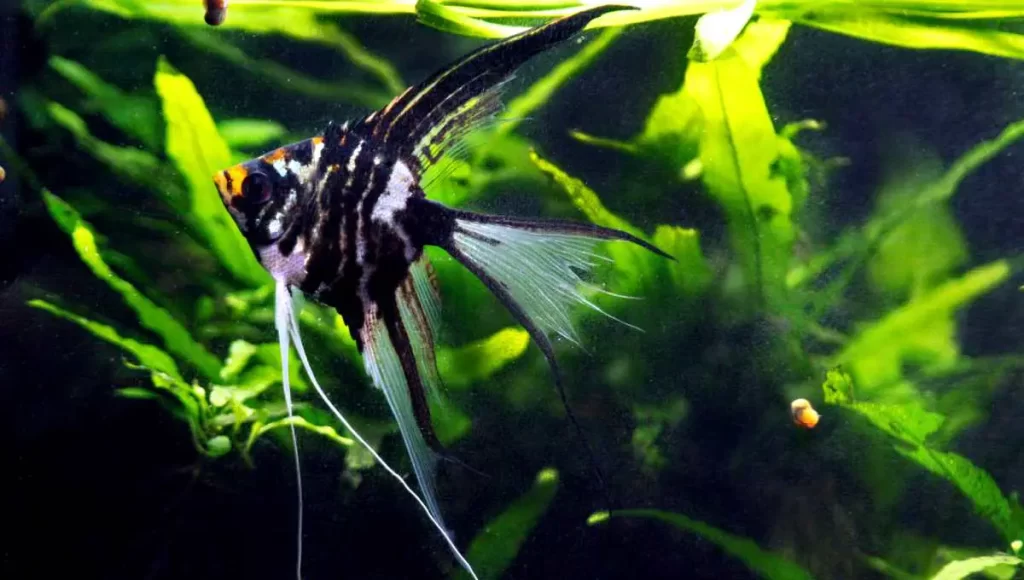
Angelfish are native to the Amazon basin in South America. They prefer temperatures between 75-82°F (24-28°C) and are known to do well in a community tank.
3. Discus Fish
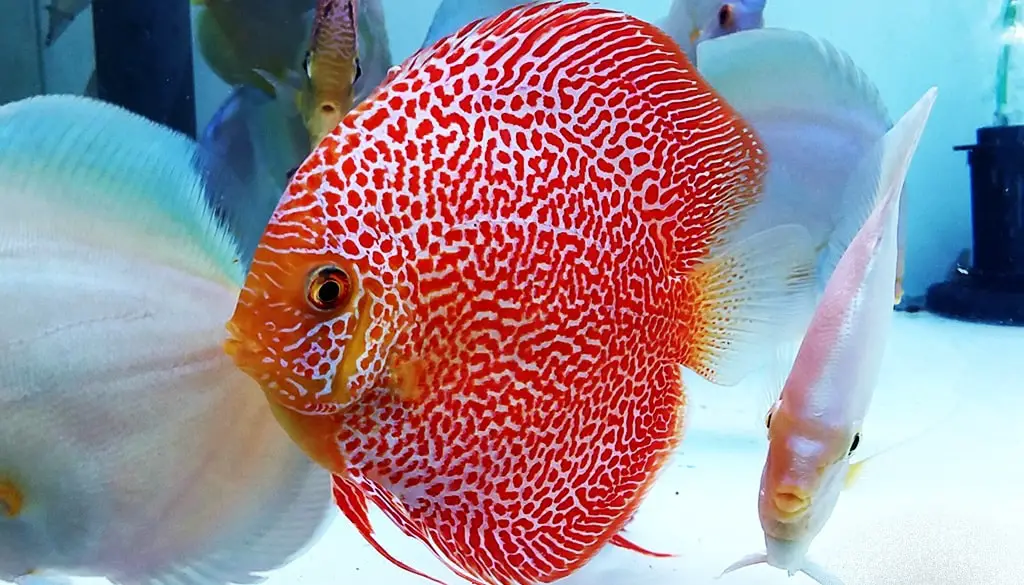
Discus fish are native to the warm, acidic waters of the Amazon River basin. They thrive in temperatures between 82-86°F (28-30°C) but are more sensitive to water quality than other fish.
4. Betta Fish
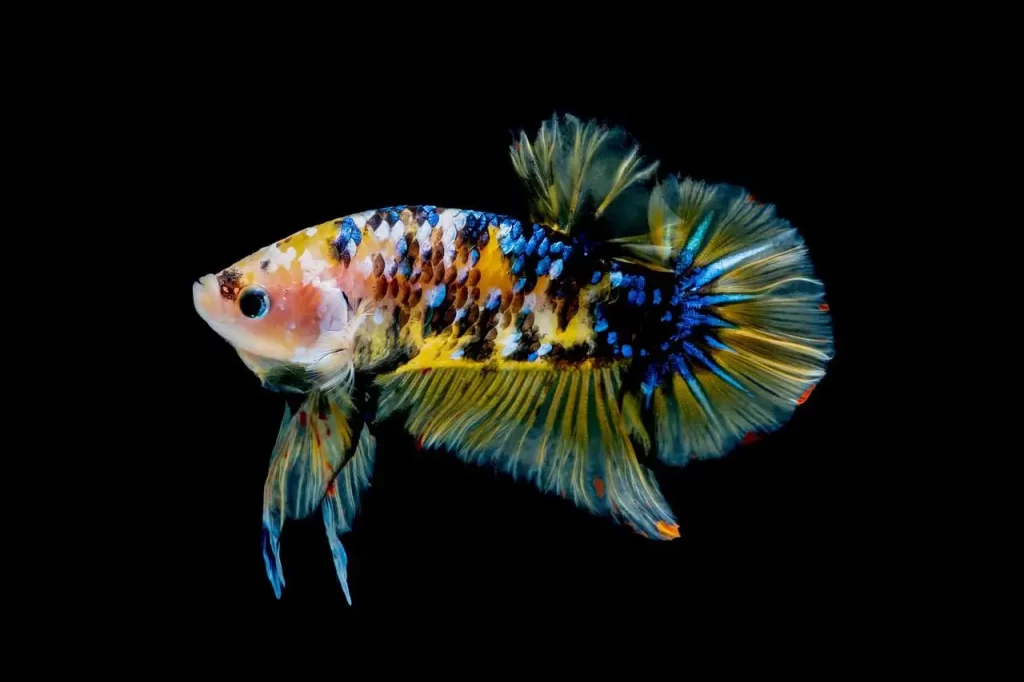
Bettas are native to the shallow waters of rice paddies and swamps in Southeast Asia. They prefer temperatures between 78-80°F (25-27°C) and are known for their vibrant colors and aggressive personalities.
5. Guppy Fish
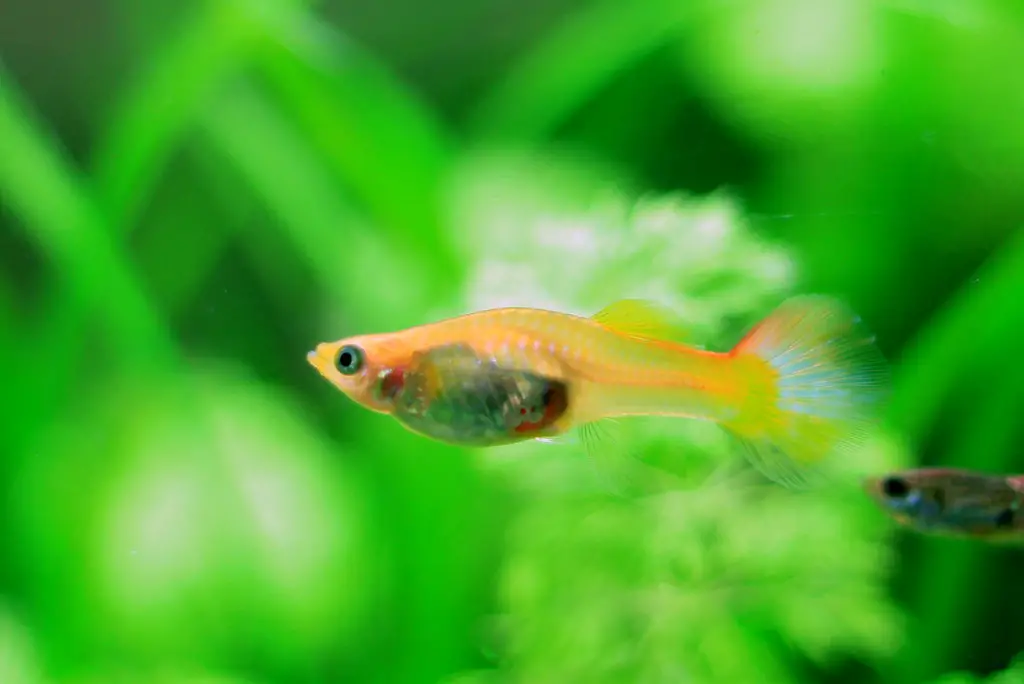
Guppies are native to the fresh and brackish waters of South America and the Caribbean. They are adaptable and can tolerate a wide range of temperatures but generally prefer temperatures between 75-82°F (24-28°C).
6. Molly Fish

Mollies are native to the fresh and brackish waters of Mexico and Central America. They prefer temperatures between 75-82°F (24-28°C) and are known for their peaceful nature and interesting patterns.
7. Convict Cichlid
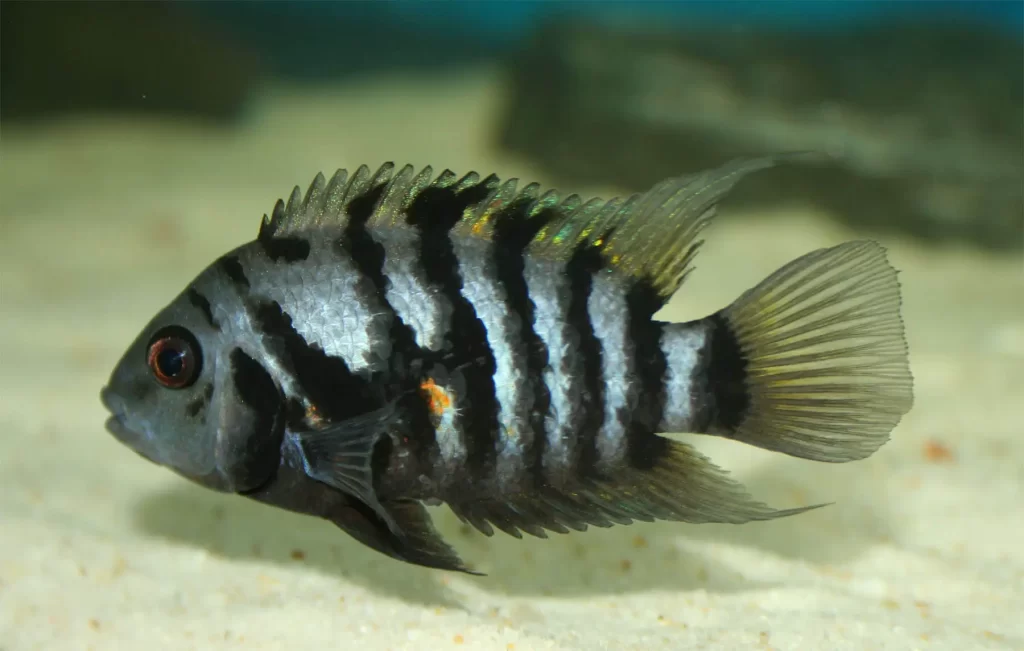
Convict Cichlids are native to Central America, from Guatemala to Panama. They are hardy and can adapt to various water conditions but prefer temperatures between 75-82°F (24-28°C).
8. Jack Dempsey Cichlid
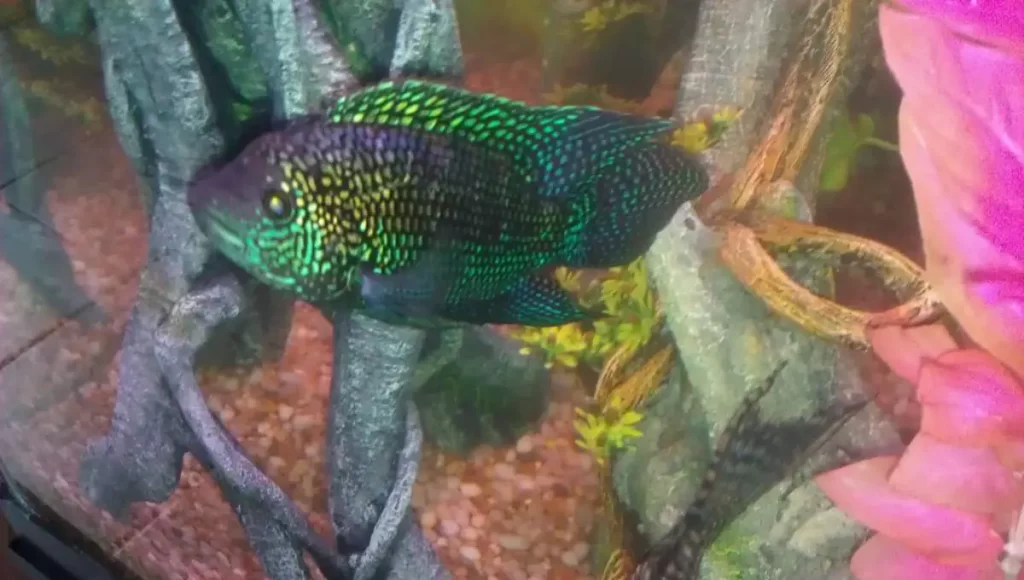
Jack Dempsey Chiclids are native to Central America, from Mexico to Honduras. They prefer temperatures between 78-84°F (25-29°C) and are known for their striking appearance and aggressive behavior.
9. Salvini Cichlid
These fish are native to the rivers and streams of Central America, from Mexico to Panama. They prefer temperatures between 75-82°F (24-28°C) and are known for their bold coloring.
10. Rainbow Cichlid
Rainbow Chichlids are native to the rivers and streams of Central America, from Honduras to Panama. They prefer temperatures between 78-82°F (25-28°C) and are known for their colorful scales and peaceful temperament.
Remember, it’s important to research the specific needs of each fish species before adding them to your aquarium to ensure they have the proper care and environment to thrive.
Frequently Asked Questions(FAQs)
Here are some of the frequently asked questions about aquarium maintenance during hot summer days:
How Often Should I Check The Temperature Of My Aquarium During Summer?
You should check the water’s temperature every day, especially if you live in a place with hot weather. You can use a thermometer to check the water temperature, or if you want something fancy, you can get a digital temperature controller that can help regulate the temperature automatically.
Is It Possible To Control The Amount Of Natural Light Entering An Aquarium Using A Shade Cloth?
Yes, you can control the amount of natural light entering an aquarium using a shade cloth. This is a great way to avoid problems like excessive algae growth, changes in temperature, and other issues that can result from direct sunlight.
How Often Should I Clean My Aquarium During The Summer Months?
You should clean your aquarium at least once a week to ensure the water quality stays good and there’s no yucky buildup of waste and scrabs. This means removing leftover food, cleaning up dead plants, and removing fish poop. You’ll also want to scrub off algae sticking to the walls or decorations.
Conclusion
In addition to the tips mentioned above, it’s important to remember that every aquarium is unique and may require different care based on its size, inhabitants, and equipment. So, it’s always a good idea to research and understand the specific needs of your fish and aquatic plants before making any changes to their environment.
With the right care and attention, your fish can survive and enjoy the summer season in their comfortable and healthy aquatic home. If you want to learn more about aquariums and fish, stay tuned!





